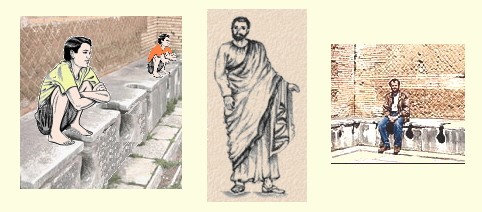There are many lifestyle and environmental causes of low sperm count. We’ve compiled a check list. Positive changes can help!

Half of all infertility cases are male related! The good news is that low sperm count is the most common reversible cause of male factor infertility.
Firstly, there are certainmedical conditions or prescription medicationsthat can interfere with male fertility.
Some common medical conditions or previous testicular injury can impair sperm production. It’s advised to have a general check up with your personal physician to diagnose or manage any health issues that may contribute towards low sperm count. Occasionally a change or an adjustment of a particular medication may be required. If necessary your doctor will refer you onto a specialist for further evaluation.
Sperm quality is just as important – some of these factors below also effect sperm motility (movement and speed) and morphology (shape). Semen can also suffer (fluid that contains spermatozoa). These criteria influence the chances of conception taking place.
Causes of low sperm count and other abnormalities
Often there’s a few contributing factors -
Stress – adrenal hormones can interfere with the production of our major sex hormones. Chronic stress leads to other health ailments which can eventually interfere with the reproductive system.
Nutritional deficiencies and poor eating habits – lack of fresh organic fruit and vegetables. Eating too many processed products, refined foods, sugars, and fats.
Pesticides - present on conventional fruit and vegetables. Responsible for numerous health issues.
Growth hormones - found in conventional animal products. Associated with estrogen dominance related conditions.
Too much alcohol – depletes vitamins and minerals from the body. An overworked liver can cause a rise in estrogen.
Excessive caffeine consumption – linked to several sperm problems. Mostly found in coffee, tea, chocolate, cola, energy drinks, and some medications. There are other types of caffeine based stimulants people use to help keep awake (e.g. in tablet form).
Overheating of the scrotum – one of the common causes of low sperm count. Hot baths, saunas, and electric blankets can overheat sperm producing cells in the testicles. Exposure to heat in the work environment. Using a laptop on your knees (heat produced by battery) has been proved to increase scrotal temperature. Long hours driving or sitting. Tight underwear or trousers, or constantly keeping legs crossed/pressed together can trap heat.
Sleep deprivation – an array of health complaints and illnesses including fertility problems.
Lack of exercise – too little physical activity can lead to sluggish circulation and poor health, which can become causes of low sperm count.
Overexertion - some men go to the extreme and overexert themselves, which risks sperm supply by overheating. Prevalent in endurance athletes.
Regular bike riding - poses a risk because of pressure and friction against the seat restricting blood flow to the testicles.
Obesity – fat cells secrete estrogen. The consequence is a diminished testosterone level (hormone needed for sperm production). Skin folds covering the genital may also be a problem for obese men, as the testicles can overheat effecting sperm count.
Underweight - hormonal imbalance is a possibility. Lack of essential nutrients required for sperm production.
Smoking cigarettes – major cause of poor sperm quality. Known to cause agglutination (sperm cells clumping together). Can damage genetic material within the sperm cells.
Abuse of anabolic steroids - suppresses the testes ability to produce testosterone.
Marijuana use – includes sperm motility problems which make it harder to reach the female egg.
Other recreational drugs, substance abuse – can cause DNA damage, therefore putting future offspring at risk.
EMF exposure (electromagnetic field) – cell phones in pockets near the crotch, laptops placed on knees, and electric blankets.
X-rays – any rapidly dividing cells are affected, including sperm cells. The genital area should have a protective shield whenever possible. Higher doses of x-ray radiation have more severe effects on sperm production.
Hidden environmental toxins and hormone disruptors (xenoestrogens) – one of the not so obvious causes of low sperm count! Found all around us in a variety of unsuspecting places, such as cleaning products in the home, plastic food packaging, and the personal care products that we use on a daily basis.
Hazards in the workplace - many men work with and around toxic substances, chemicals, and heavy metals, which can be damaging to sperm cells. Precautionary measures should always be enforced and practiced.
Extra considerations
Recent sickness – illness, infections, and fever can result in temporary sperm depletion for up to three – four months after the ailment has passed.
Frequent ejaculation – can lower sperm count.
Lubricants – There’s specifically designed lube for couples trying to conceive. Only use sperm friendly lubricants as other brands are inhospitable to sperm cells and can damage or kill them.
Help with the above common causes of low sperm count!
 Sperm cells are constantly being produced, although they take around three – four months to mature enough for ejaculation. Certain lifestyle adjustments can make a difference! By addressing any factors that can decrease sperm count (given time) you can help replenish your “swimmers” and improve their quality.
Sperm cells are constantly being produced, although they take around three – four months to mature enough for ejaculation. Certain lifestyle adjustments can make a difference! By addressing any factors that can decrease sperm count (given time) you can help replenish your “swimmers” and improve their quality.
Article Extracted from:
http://www.fertility-health.com/causes-of-low-sperm-count.html
Courtesy of www.fertility-health.com






